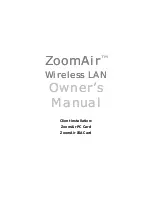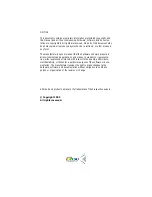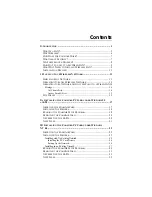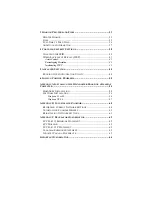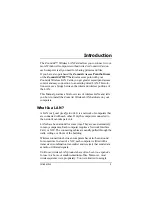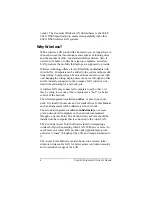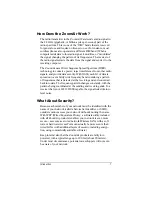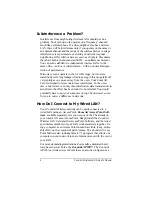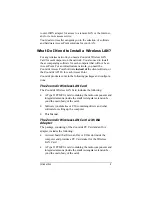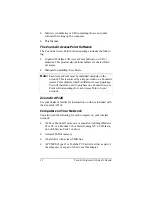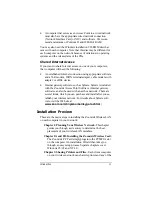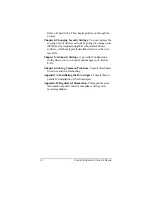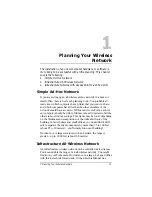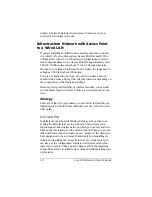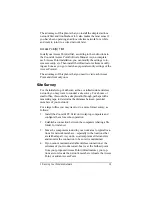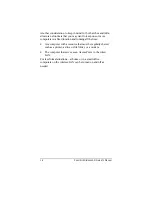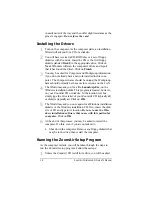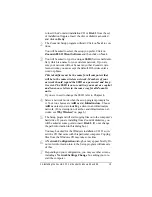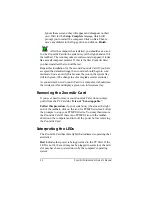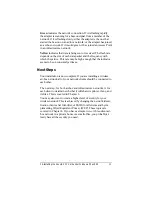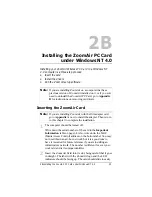
Introduction
7
How Does the ZoomAir Work?
The radio transmitter in the ZoomAir Card sends a radio signal in
the 2.4 GHz (gigahertz, or billion-cycles-per-second) part of the
radio spectrum. This is one of the “ISM” bands that are reserved
for general use and require no license to use. (For instance, most
cordless phones also operate in a different ISM band.) When a
computer adds data to this radio signal, it modifies, or “modulates”
the signal, changing the pattern of its frequencies. The receiver of
the radio signal extracts the data from the signal and sends it to the
receiving computer.
The ZoomAir uses Direct Sequence Spread Spectrum (DSSS)
technology to conserve power, reject interference from other radio
signals, and provide data security. With DSSS, each bit of data is
spread out over a fairly wide frequency band containing a pattern
of frequencies that is detected at the receiving end and converted
back into data. The frequency pattern changes constantly, with the
patterns being coordinated at the sending and receiving ends. To a
receiver that is not 802.11 DSSS capable, the signal looks like low-
level noise.
What About Security?
Because each member of your network must be identified with the
name of your network (called a Service Set Identifier, or SSID),
outsiders cannot access your network without knowing the name.
With WEP (Wired Equivalent Privacy, a software utility included
with all ZoomAir products) enabled, your network is even more
secure—as secure as a wired network.Wireless LANs with a soft-
ware or hardware Access Point can actually be more secure than
wired LANs (with additional layers of security, including encryp-
tion, using commercially available software).
Keep in mind also that the ZoomAir products are fairly low-
powered, with a typical range up to 300 feet (about 90 meters).
Under most circumstances, potential eavesdroppers will not even
be aware of your network.

